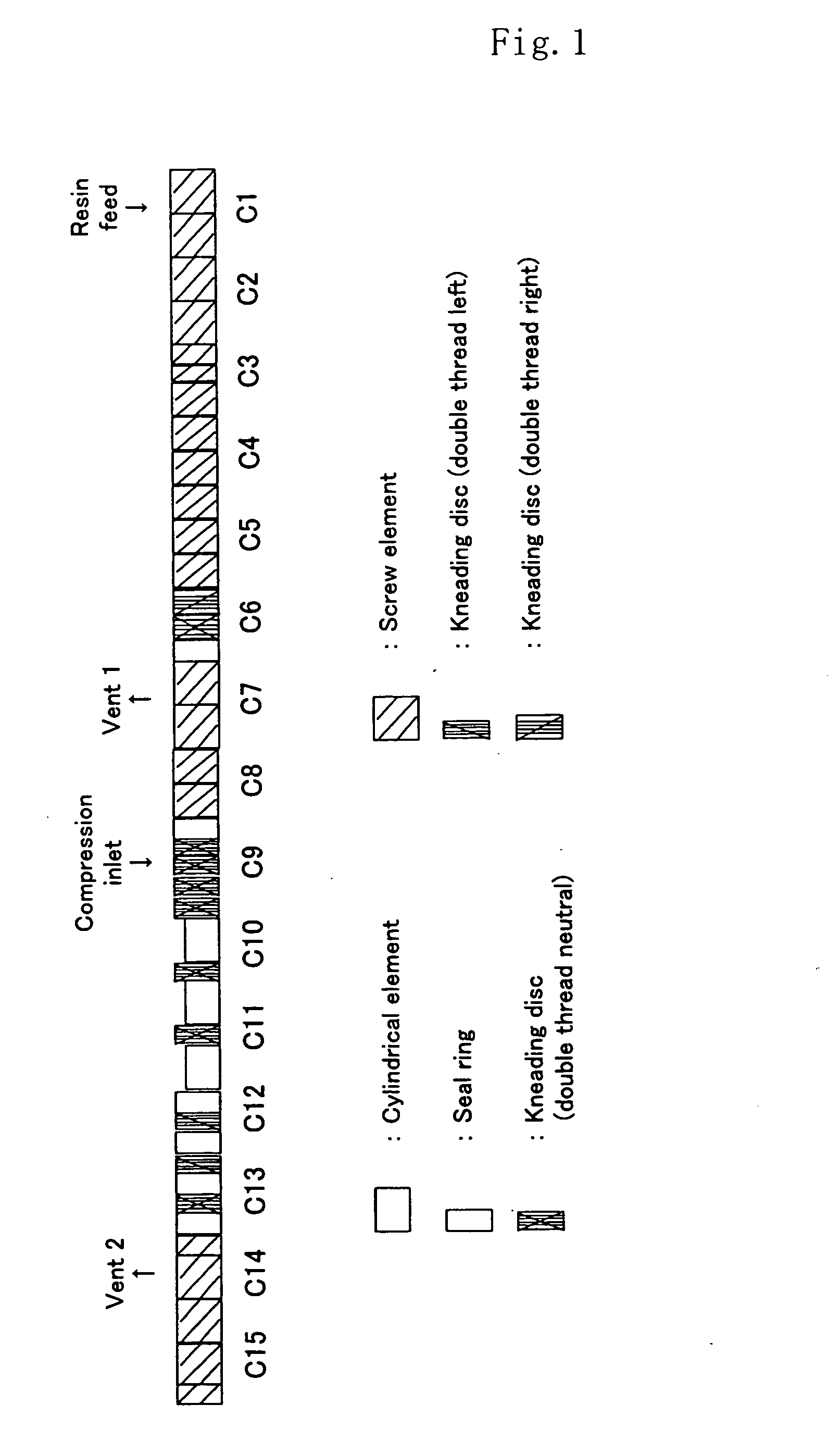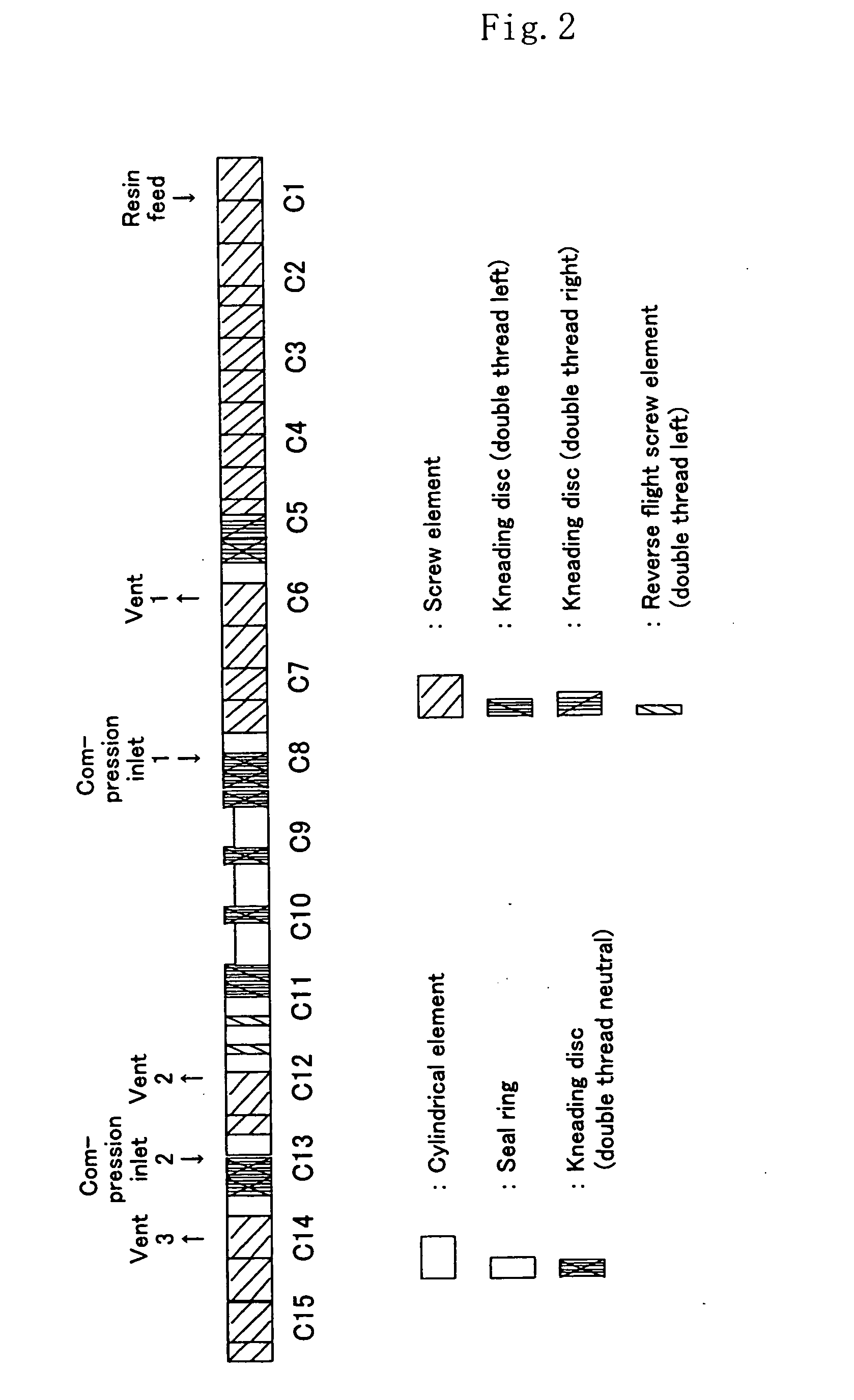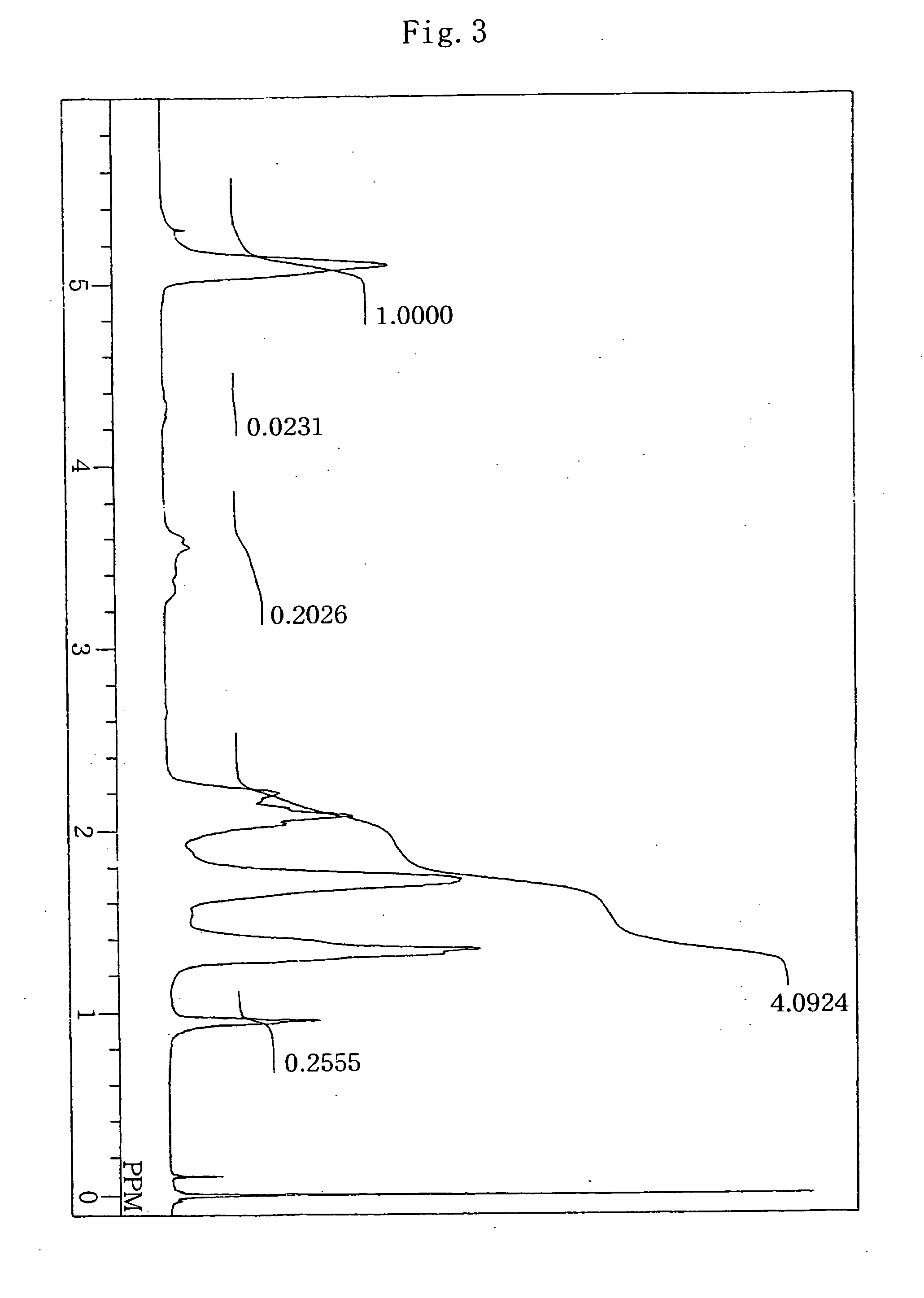Resin composition and multi-layer structures
a multi-layer structure and resin technology, applied in the field of resin composition, can solve the problems of poor deterioration of transparency, and difficulty in achieving satisfactory stretchability, flexibility and flexing resistance, satisfactory transparency of the resulting resin composition at the same time, so as to prevent the deterioration of resin and improve the stability of mel
- Summary
- Abstract
- Description
- Claims
- Application Information
AI Technical Summary
Benefits of technology
Problems solved by technology
Method used
Image
Examples
synthesis example 1
[0331] 100 parts by weight of hydrous pellets (water content: 130% (dry basis)) of an ethylene-vinyl alcohol copolymer having an ethylene content of 32 mol %, a degree of saponification of 99.6% and an intrinsic viscosity of 0.0882 L / g were immersed and stirred in 370 parts by weight of an aqueous solution containing acetic acid and potassium dihydrogenphosphate in amounts of 0.1 g / L and 0.044 g / L, respectively, at 25° C. for 6 hours. The pellets obtained were dried at 105° C. for 20 hours, resulting in dry EVOH pellets. The dry EVOH pellets had a potassium content of 8 ppm (in terms of metal element), an acetic acid content of 53 ppm, a phosphoric acid compound content of 20 ppm (in terms of phosphate radical) and an alkaline earth metal salt content of 0 ppm. In addition, the dry pellets had an MFR of 8 g / 10 minutes (at 190° C., under 2160 g load). The EVOH thus obtained was used as an EVOH (A). Moreover, 1,2-epoxybutane was used as a monofunctional epoxy compound (B) having a mol...
synthesis example 2
[0353] Into a polyethylene bag, introduced was 5 kg of pellets of an EVOH having an ethylene content of 44 mol %, a degree of saponification of 99.8%, an intrinsic viscosity of 0.096 L / g and an MFR of 5 g / 10 min (at 190° C. under a load of 2160 g) {acetic acid content: 53 ppm, sodium content: 1 ppm in terms of metal element, potassium content: 8 ppm in terms of metal element, phosphoric acid compound content: 20 ppm in terms of phosphate radical}. Then, an aqueous solution was prepared by dissolving 27.44 g (0.125 mol) of zinc acetate dihydrate and 15 g (0.1 mol) of trifluoromethane sulfonic acid in 500 g of water. The aqueous solution was added to the EVOH in the bag. The EVOH to which a catalyst solution had been added in the way described above was heated at 90° C. for 5 hours under occasional shaking with the opening of the bag closed. Thus the EVOH was impregnated with the catalyst solution. The resulting EVOH was dried at 90° C. under vacuum to yield an EVOH including a cataly...
synthesis example 3
[0359] A mixed solution was obtained by mixing 28 parts by weight of zinc acetylacetonato monohydrate and 957 parts by weight of 1,2-dimethoxyethane. To the resulting mixed solution, 15 parts by weight of trifluoromethane sulfonic acid was added under stirring, yielding a solution containing a catalyst (D). In other words, prepared was a solution in which 1 mol of trifluoromethane sulfonic acid was mixed per 1 mol of zinc acetylacetonato monohydrate.
[0360] 100 parts by weight of hydrous pellets (water content: 130% (dry basis)) of an ethylene-vinyl alcohol copolymer having an ethylene content of 32 mol %, a degree of saponification of 99.6% and an intrinsic viscosity of 0.0882 L / g were immersed and stirred in 370 parts by weight of an aqueous solution containing acetic acid and potassium dihydrogenphosphate in amounts of 0.1 g / L and 0.044 g / L, respectively, at 25° C. for 6 hours. The pellets obtained were dried at 105° C. for 20 hours, resulting in dry EVOH pellets. The dry EVOH pe...
PUM
| Property | Measurement | Unit |
|---|---|---|
| melting point | aaaaa | aaaaa |
| RH | aaaaa | aaaaa |
| diameter | aaaaa | aaaaa |
Abstract
Description
Claims
Application Information
 Login to View More
Login to View More - R&D
- Intellectual Property
- Life Sciences
- Materials
- Tech Scout
- Unparalleled Data Quality
- Higher Quality Content
- 60% Fewer Hallucinations
Browse by: Latest US Patents, China's latest patents, Technical Efficacy Thesaurus, Application Domain, Technology Topic, Popular Technical Reports.
© 2025 PatSnap. All rights reserved.Legal|Privacy policy|Modern Slavery Act Transparency Statement|Sitemap|About US| Contact US: help@patsnap.com



